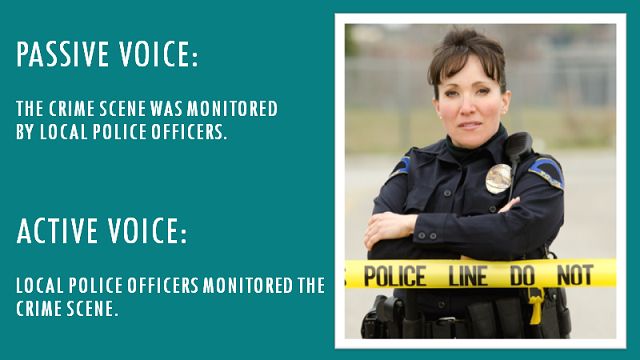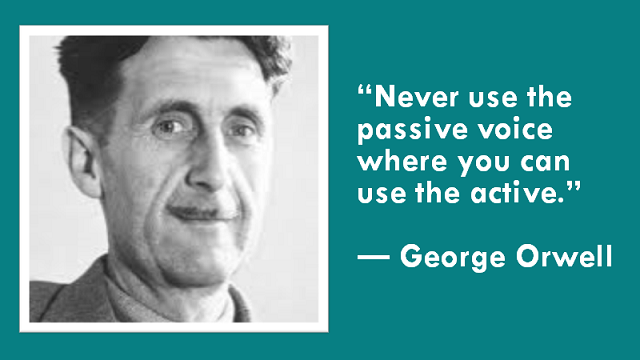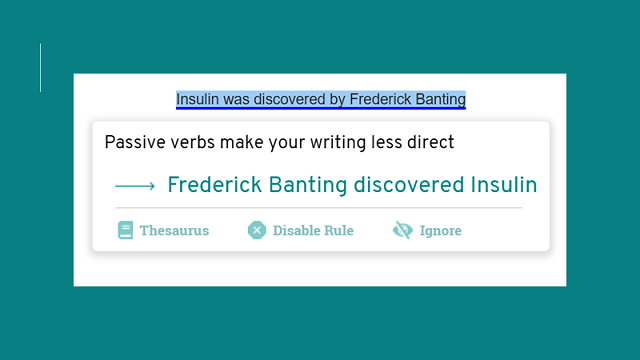

Passive voice is one of the most polarizing bad writing habits out there. Many self-proclaimed grammar snobs consider passive voice to be incorrect.
Here’s the thing: passive voice isn’t actually grammatically incorrect. However, it’s often stylistically better to use active voice.
The passive voice means that you have written the object of your sentence first and then put the subject of your sentence at the end.

With each sentence, think about who is doing the action. In the above example, Joe is the subject, he is the do-er. He is doing the recycling, and the bottle is the object of the recycling. Both sentences are essentially saying the same thing, but in the first one, the focus is on the bottle; in the second, the focus is on Joe.
In the first example you have to wait until the end of the sentence to find out who is doing the action, which means your sentence has less impact. Action and the verbs showing action is what gives your writing power. It’s usually better to put your action up front.


Imagine that you're painting a picture of the scene in your reader’s head. They can’t really picture the scene until they know who has done the action.
Don't believe us? We're backed up by our friend George who has sold a book or two in his time:

Like most writing rules, there are exceptions! Let’s take a quick look at when passive voice works best.
In the above instance, we don’t know who robbed the bank.
In this case, we are not concerned with who built the Empire State Building.
Unless your sentence falls into one of those four categories, there is a good chance that you can improve clarity by rewriting.
Changing the passive voice into the active voice is simple. For our next example, we’ll take a more complex passive sentence.
The first step in the process is locating the subject. The subject is the person or thing that is taking an action.
Is the dog the subject? It may be the first noun in the sentence, but what was it doing? The dog was doing nothing, so it can’t be the subject.
The fox however, was doing something: biting. Therefore she is the subject of the sentence.
Now that you have identified the subject of the sentence, look for the object of the sentence.
Who or what was the fox biting? The dog, of course! Since we don’t know what the dog is up to, and he’s being acted upon by something else, we can safely assume that he is the object of the sentence.
The final step in making the switch is putting the subject at the front of the sentence and the object towards the end.
Make it clear in your sentence WHO is doing WHAT to WHOM. This helps your brain create an image in your mind. You can picture the fox first and then have it bite the dog. It's much more difficult if you have to picture the biting first and then add the dog.
Give it a try before reading the active version of our dog/fox sentence below, and see how you do by comparing it to our example.
The ProWritingAid editing tool will highlight all instances of passive voice in your text so that you can check to see if they should be re-written.

Here are some questions to ask yourself when considering whether or not to rework the passive voice sentences:
If the answer is “yes” to either of these questions, you’ll likely want to change the sentence from passive to active voice.
If the answer is “yes” to either of these questions, you may want to leave your sentence in the passive voice.
If you'd like to read more about passive voice, you should check out these articles.